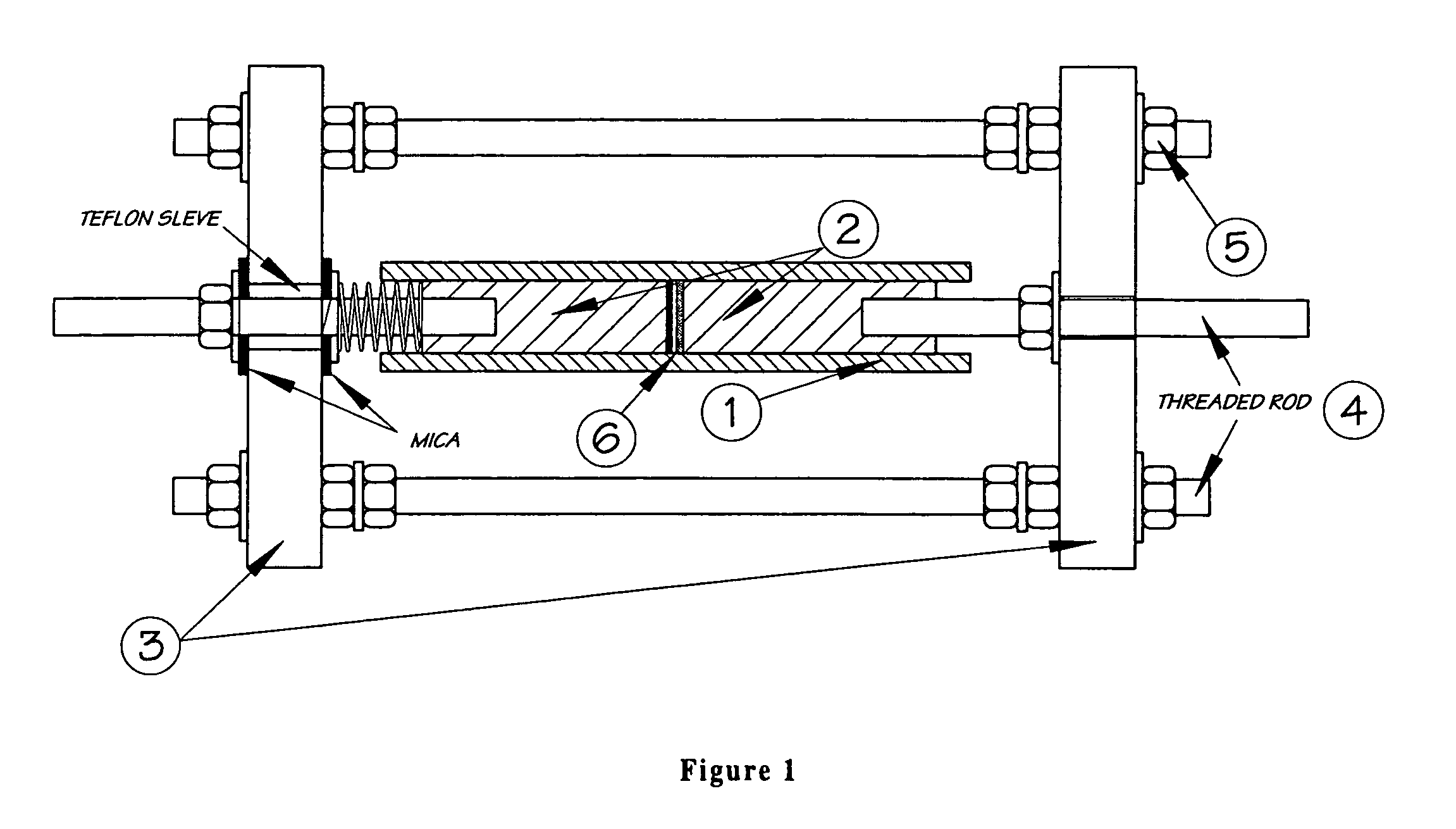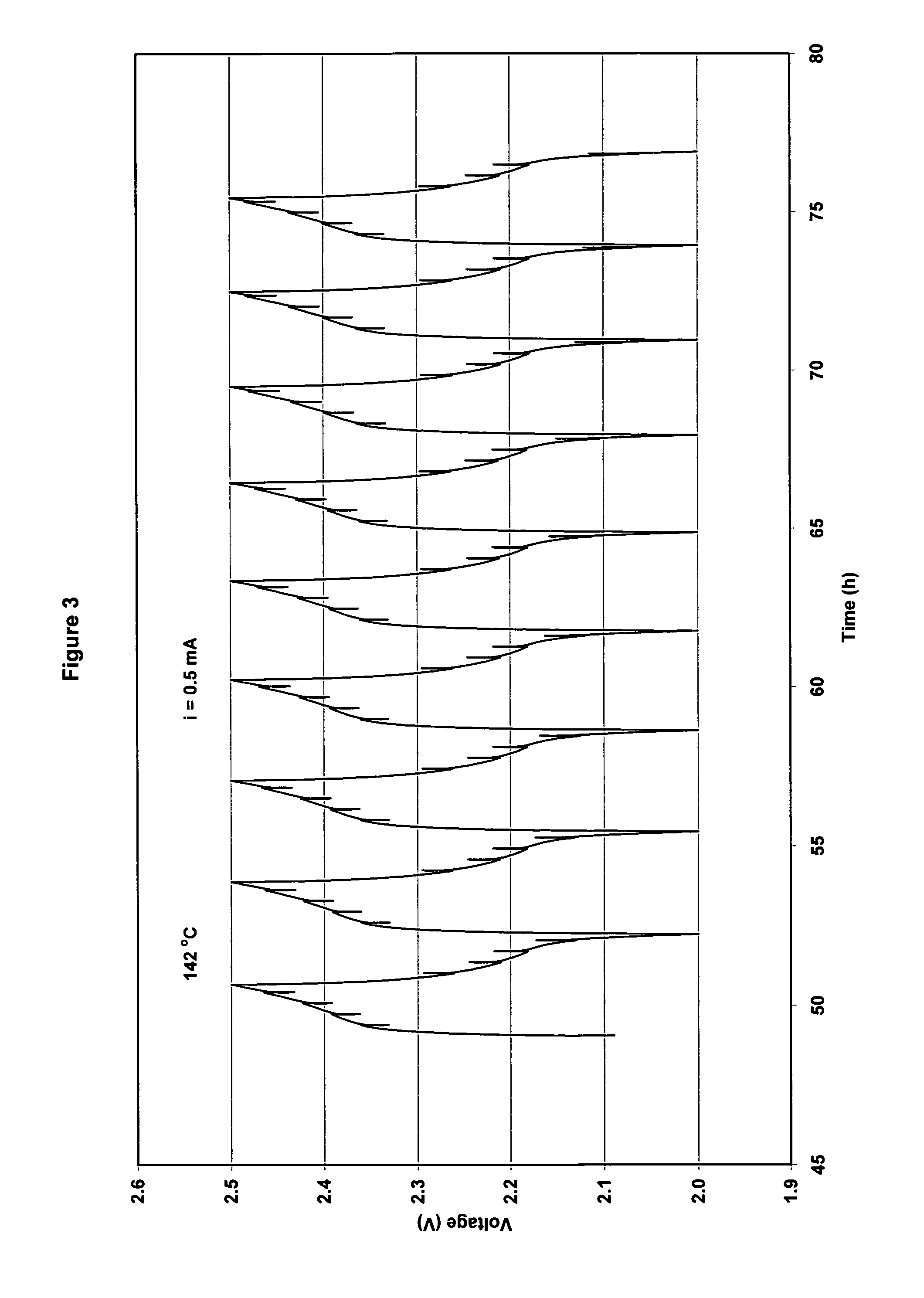Lithium-ion cell with a wide operating temperature range
a lithium-ion cell and wide operating temperature range technology, applied in the field of electrochemical cells, can solve the problems of limited high temperature operation, solvents as electrolytes, etc., and achieve the effect of improving the cycling charging and discharging of an electrochemical cell
- Summary
- Abstract
- Description
- Claims
- Application Information
AI Technical Summary
Benefits of technology
Problems solved by technology
Method used
Image
Examples
example 1
[0072]The cell LiCoO2 / EMIBETI+0.8 molal LiBETI / Li4Ti5O12
[0073]The cathode had a practical capacity of 2.1 mAh and the anode had a capacity of a 1.9 mAh. (ratio cathode capacity / anode capacity C / A=1.08). The cut-off voltages for charge / discharge cycling were set at 2.5V on charge and 2.0 V on discharge. However, for high current discharges, the cut-off voltage was set at 1.8 V. Results for cycling at 95° C. using 0.3 mA current and at 142° C. using 0.5 mA are shown in FIG. 2. Charge / discharge cycles are shown in FIG. 3. The cell capacity was stable with cycling at 95° C. However, at 142° C. cell capacity decreased progressively with cycling (30% decrease in 30 cycles).
example 2
[0074]The cell LiCoO2 / EMIBETI+0.8 molal LiBETI / Li4Ti5O12 with the cathode having a practical capacity of 3.0 mAh and the anode with 1.72 mAh (C / A=1.7).
[0075]Cut-off voltages for cycling were set at 2.5 V for charge and 2.0 V for discharge. When the cell was cycled at 21° C. using 0.2 mA current, the cell showed stable capacity, but at 130° C. using 1.65 mA current, the cell capacity decreased progressively (34% decrease in 30 cycles, FIG. 4).
example 3
[0076]The cell LiCoO2 / EMIBETI+0.8 molal LiBETI / Li4Ti5O12 with the cathode having a practical capacity of 3.75 mAh and the anode with 2.1 mAh (C / A=1.8).
[0077]Cut-off voltages for cycling were set at 2.5 V for charge and 2.0 V for discharge. When the cell was cycled at 90° C. (0.42 mA), the cell showed stable capacity, but at 114° C. (0.42 mA) the capacity decreased with cycling (30% decrease in 20 cycles, FIG. 5).
PUM
| Property | Measurement | Unit |
|---|---|---|
| temperature | aaaaa | aaaaa |
| temperatures | aaaaa | aaaaa |
| temperature | aaaaa | aaaaa |
Abstract
Description
Claims
Application Information
 Login to View More
Login to View More - R&D
- Intellectual Property
- Life Sciences
- Materials
- Tech Scout
- Unparalleled Data Quality
- Higher Quality Content
- 60% Fewer Hallucinations
Browse by: Latest US Patents, China's latest patents, Technical Efficacy Thesaurus, Application Domain, Technology Topic, Popular Technical Reports.
© 2025 PatSnap. All rights reserved.Legal|Privacy policy|Modern Slavery Act Transparency Statement|Sitemap|About US| Contact US: help@patsnap.com



